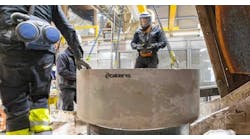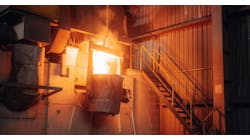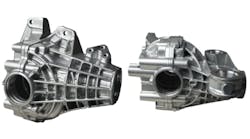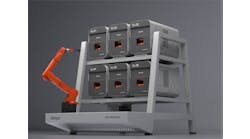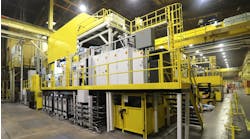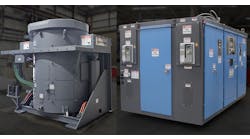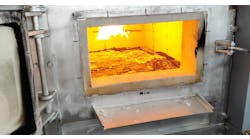Just as the automotive sector responded to the regulatory burden of cutting carbon emissions, and reacted to commercial pressure to design lighter vehicles, one of their number is working to produce ferrous components that conform to emerging carbon-neutrality schedules.
Mazda Motor Corp. reports it conducted cupola melting tests at its Hiroshima, Japan, ferrous foundry in which CO2-emitting fossil fuels were replaced with “biomass fuel” – meaning organic matter that can be burned to generate heat or converted into liquid or gas to generate energy. Specifically, Mazda fueled its cupola with bio-coal briquettes derived from coconut shells.
Carbon neutrality – or maintaining a “net-zero carbon footprint – means that an enterprise balances the amount of carbon dioxide it releases with an equivalent amount of carbon removed from the atmosphere, so that it conducts its activities with no overall increase in carbon emissions.
Mazda has not summarized the performance of the cupola melting process using the coconut shell-based fuel, but it confirmed its goal to achieve carbon-neutral cupola operation using waste-derived biomass fuels by 2030. More broadly, Mazda is promoting carbon neutrality by 2035 for its global operations, based on three strategies: "energy conservation," "shifting to renewable energies," and "introducing CN fuels, etc." The automaker aims to achieve the carbon neutrality throughout its supply chain by 2050.
Cupola melting continues to be a popular choice for foundries producing high volumes of ferrous alloys. The process is reliable, effective, and well established – but a growing expectation (in Japan and elsewhere) that manufacturers achieve net-zero carbon emissions performance stands as a significant challenge to the future of cupola ironmaking. The Hiroshima foundry is a critical asset for Mazda, so the automaker partnered on the demonstration program with the Japanese metalcasting industry and other local interests.
Mazda has sponsored various initiatives to achieve carbon neutrality at its plants by 2035, working around three strategic objectives: energy conservation, identifying renewable energy sources, and adopting carbon-neutral fuels.
One of the issues to be resolved before biomass fuels can be embraced for cupola melting, or for any industrial use, is establishing a stable supply of the material. In March 2023, Mazda set up a Cupola CN Co-creation Working Group and invited volunteer organizations to participate in its plan to shift to biomass fuels. These participants were involved in establishing production methods and defining a local/regional supply chain for the raw materials.
Other fuel sources were evaluated besides the bio-coal briquettes derived from coconut shells used in the demonstration. Mazda is working to establish a locally produced, locally consumed energy circulation scheme in Hiroshima and environs, from biomass waste collection to production. Supporting local economic activity and community growth is a stated part of this effort. For example, Mazda collected coffee bean husks from local shops and vending machines, and confirmed through tests that it is possible to produce bio-coal briquettes from those residues.
Going forward, Mazda will work with the community to develop a “local production for local consumption” energy circulation scheme involving industry, government, academia, and private businesses, to establish stable raw material procurement and converting those materials into fuel.
Use of 100% biomass fuel brings problems beyond sourcing and preparation, and there are other foreseeable problems, such as air pollution related to the fuel’s constituents. Carbon-neutrality proponents see biomass fuel as a valuable component of a diversified energy mix, particularly for heat and electric power production.
And in an important development for carbon neutrality and automotive casting, the nuts may be taking over the establishment.
